Multimeter Test Leads Comparison Review: Probe Master, Fluke, Kaiweets
I recently purchased Probe Master test leads to replace the cheap leads I was using with my Keithley 175. I couldn't decide between the 8000 and 9000 series, so I bought both to compare and review. When Kaiweets asked about us reviewing their soldering iron, I asked them to send some test leads too, so I could include them here. I then asked six other test lead manufacturers if they wanted to send loaners for inclusion in this comparison. None were interested, so I've just included what I have.
Test leads in this comparison are:
- Probe Master 8043S Test Lead Kit - $38
- Probe Master 9104 Electronic Deluxe Test Lead Kit - $115
- Fluke TL75 Hard Point Test Lead Set - $35 ($30 at Amazon)
- Fluke AC175 Alligator Clip Set - $45 ($27 at Amazon)
- Kaiweets KET11 Multimeter Test Leads Set - $20 (with coupon)
- Kaiweets KET05 Multimeter Test Leads Kit - $39 (with coupon) ($35 at Amazon)
- Circuit Specialists 68-0850 - $1.95 (but shipping is high)
- Elenco TL-12 - $9
- Southwire leads (included with meter)
- Harbor Freight/Mastech Leads (included with meter)
- Harbor Freight free-with-coupon leads (included with multimeter)
- Fluke T+Pro probes (included with voltage tester)
Everybody reading Applefritter is familiar with the typical test leads included with multimeters. They're all roughly the same design, with PVC coated wire and nickel plating on the probes.
In an aftermarket lead set, I was looking for silicone coating on the leads, gold contacts, and a variety of accessories for latching onto test points. My biggest complaint about standard multimeter test leads is needing to keep both hands steady on their targets, while reading the results in a third location. I like to use alligator clips or minigrabbers whenever possible, especially for ground.
I was also looking for silicone coating. Compared to PVC, silicone is more flexible and has a higher melting point. In this comparison the Probe Master and Kaiweets probes have silicone coating, while the rest are PVC.
Probe Master's silicone leads are fantastic—very flexible and easy to manage. The flexibility of the KET11 leads is notably inferior to Probe Master's, but still a substantial improvement over PVC leads. The KET05 leads are also advertised as silicone, although I didn't realize it until I read the description. Comparing them closely, I think they're a little more pliant than the PVC leads.
I was also looking for gold leads, as they don't oxidize and have a lower resistance than nickel. Gold is also softer than nickel, which could shorten the life of gold plated probes. For the Probe Master 8000 series, this means buying a whole new set. For the 9000 series, you can get a spare 9153 Standard Probe for $5.30.
Resistance
Resistance was measured with a Fluke 87V (my Keithley broke!). I took the measurements by laying one probe on top of the other, without any pressure beyond the weight of the probe. For clips, I clipped them together. All the probes with gold connectors and points read 0.1 ohm resistance. The best nickel-plated probes had a resistance of 0.2 ohms. Most were higher.
| Device | Resistance |
| Probe Master 4ft lead with no probes | 0.1 ohm |
| Probe Master 9104 gold probes | 0.1 ohm |
| Probe Master 9104 minigrabber | 0.2 ohm |
| Probe Master 9104 alligator clips (all of them) | 0.1 ohm |
| Probe Master 8043S gold probes | 0.1 ohm |
| Probe Master 8043S minigrabbers | 0.1 ohm |
| Fluke TL75 probes | 0.4 ohm |
| Fluke AC175 alligator clips | 0.2 ohm |
| Fluke T+Pro probes on Probe Master leads | 0.6 ohm |
| Kaiweets KET11 beryllium copper probes | 0.1 ohm |
| Kaiweets KET11 nickel probes | 0.2 ohm |
| Kaiweets KET11 alligator clips | 0.1 ohm |
| Kaiweets KET05 large nickel probes | 1.1 ohm |
| Kaiweets KET05 standard nickel probes | 0.4 ohm |
| Kaiweets KET05 long-pointed nickel probes | 2.2 ohm |
| Kaiweets KET05 minigrabber | 0.2 ohm |
| Kaiweets KET05 alligator clips | 0.1 ohm |
| Kaiweets KET05 tweezers | 0.7 ohm |
| Harbor Freight/Mastech nickel probes | 0.2 ohm |
| Elenco TL-12 minigrabber | 0.1 ohm |
| Circuit Specialists 68-0850 nickel probes | 0.7 ohm |
| Southwire nickel probes | 0.3 ohm |
| Harbor Freight free-with-coupon nickel probes | no continuity without pressure |
According to Fluke, "good quality test leads" should read "about 0.5 ohms or less." With the exception of the Harbor Freight free-with-coupon probes (1.2 ohms) and the long KET05 probes (0.7 ohms), all the leads tested read 0.5 ohms or less, with moderate pressure applied. None of the nickel probes did better than 0.2 ohms.
Probe Master 8043S Test Lead Kit
I expected these to be my favorite. They seem to be the most popular after market leads, both because of their gold plating and their ergonomic design. Probe Master's description of the ergonomics reads "The SOFTIE™ by Probe Master lets you say 'goodbye' to hand fatigue and finger calluses. A soft probe that bends 90 degrees or more. A probe that conforms to the shape of your hand."
Despite my expectations, they just didn't quite feel right in my hand. I like to hold hold a probe like a pencil. These were too short for me to do that, and their flexibility made it worse. Something about the curve of the finger guard made it feel like I couldn't get a good grip on them. They feel like they're made to be held with a very light grip by the tips of three fingers. For somebody who's probing circuits all days, maybe that's a good way to prevent calluses, but it's not what I'm used to. I promised these to ex-parrot, so we'll get a second opinion on the ergonomics, once they make it to New Zealand.
The other thing I dislike about the 8000 series is the accessories. They're too long, they're awkward to position, and I don't like having the weight and leverage on the component that they're measuring.
(Wherever possible, I'm going to mix red and black components, so the attachment points are clear.)
The spade lugs are especially awkward. In the photo below, the probe is being bent slightly, because the finger guard is too wide.
I think the market for these is people who disagree with me about the ergonomics. They're very well made, and if they fit your hand well, they'd be great for bench use, especially if you look elsewhere for accessories. For portable use, they're not a great fit for most multimeters, but if you attach them upside down, they'll stay put. The points are so sharp, you'll need to keep them covered.
The 8000 series lead sets are available in seven lengths, from 24" to 120" and with eight different plug styles.
Probe Master 9104 Electronic Deluxe Test Lead Kit
The 9100 series is my clear favorite. The silicone coating is soft and pliant. The standard probe (9153) is gold tipped and light in the hand. It has a wide finger guard that makes it easy to apply pressure. The standard probe is too wide and too short for some applications, but it only takes a moment to swap it out with the 9154 probe, which has a narrow finger guard, a 0.05" diameter and 2.5" tip length. If you line them up with a Fluke TL75 probe (center), it emphasizes how the typical probe design is a compromise between the two.
The 9100 series accessories are excellent. The alligator clips are easy to operate. All the grabbers of various styles work exactly as they should. I have nothing negative to say about any of them.
I bought an extra set of colored leads, and now this isn't just a connection kit for my multimeter. With banana plugs, alligator clips, minigrabbers, spade lugs, etc on both ends, they can connect all sorts of things.
Possibly excepting Fluke's, the alligator clips are the best of those being compared here. They grip well and are the most ergonomic. The spade lugs are also the best, since there's no probe in the way. In many situations, you don't need the spade lugs at all, since the end of the lead has a banana plug.
Like the 8000 series, the 9100 series is available in seven lengths, from 24" to 120". It is available in two plug styles on the meter side: right angle banana plugs and straight retractable banana plugs. On the probe side, it has straight retractable banana plugs.
The standard 9153 probes fit well in the Fluke and the Harbor Freight probe holders, but are loose in Southwire's (brown).
Kaiweets KET05 Multimeter Test Leads Kit (23PCS)
The KET05 kit looked like it might have the potential to be an economical alternative to the 9100 series, but the quality of nearly all components falls short. It comes with five different styles of probes, but they're not that different, and all of them have terrible resistance.
The most curious accessory is the spring probe. It's a long metal probe that, at first, I thought was broken. It hinges at the point where the hard plastic banana jack begins. Removing the soft sheathing, I discovered a spring. I'm not sure when I would use this. Coming down at an angle, the probe is too flexible to make firm contact. Coming straight down, you could just use a regular probe. Probe Masters sells a flexible probe that looks very similar, but holds its form. Perhaps that's what Kaiweets is trying to replicate.
The tweezers feel like junk. The resistance across them is high (0.7 ohms), and the shroud on the banana plugs is so thin, it tore on first use. The minigrabbers also seem cheap. They feel like they're made of thin plastic that you could crush with your fingers. The tweezers and minigrabbers both come with long leads, meant to go the whole way back to the multimeter, making this more a collection of multimeter accessories than a modular kit.
The alligator clips are decent. The large ones, in particular, are very similar to Probe Master's. Kaiweet's has a stronger spring while Probe Master's has more aggressive teeth. The more aggressive teeth win—in my testing Probe Master's had a substantially better grip.
Finally, the set includes two high voltage test hook clips. These are fantastic. I used them with a Fluke T+Pro voltage tester to poke around in the breaker box. I like them a lot better than alligator clips, for working near high voltage. The grip is stronger and your fingers don't get anywhere near the wires. You can confidently hook it onto a neutral wire and leaving it hanging in the box. Build quality is excellent. I can't think of any way it could be improved.
Kaiweets KET11 Multimeter Test Leads Set (16PCS)
The KET11's probes look like gold, but when I asked Jane at Kaiweets, she told me they were beryllium copper. Beryllium copper's conductivity and hardness is a compromise between gold and nickel. Gold is 70% as conductive as copper, beryllium copper is 58% (for a high conductivity alloy), and nickel is 22%. Hardness is inversely correlated: gold has a Vickers hardness of 188–216, high conductivity beryllium copper is 228, and nickel is 638. The KET11's beryllium copper probes performed as well as Probe Master's gold probes in my resistance tests.
The KET11 set further mitigates concerns about softness by including a spare set of beryllium copper points and two sets of nickel points. For household electrical work (as opposed to bench work), you can switch to the nickel points, and when your beryllium copper points do finally wear out, you still have a spare set.
For my hands, the KET11 is tied with the the Probe Master 9100 series for ergonomics. The feel is different, but I can't decide which I like better. One advantage of the KET11 is that it has both a longer handle and a longer point than the standard 9100 probe, with a small finger guard. The mold seams are also slightly better than Probe Master's, which is impressive for a fraction of the cost.
The KET11 comes with a chintzy little wrench for changing points. At my bench, I found it was a lot quicker and easier to use the long nose pliers I keep within reach.
The alligator clips are my least favorite, but they're strong. They attach via the banana plugs, which is a nuisance. The rubber coating is soft and wide, such that you need to center your thumb when you press on them, or it'll slip off. For everyday use, these would get annoying. For occasional use, they're completely functional.
The spade lugs are similarly awkward to the 8000 series, but the lower profile finger guard means no bending, and the availability of banana plugs minimizes the times you'd need to use spade lugs.
The probes fit well on my multimeters, but the sharp points stick up dangerously far on the Southwire meter.
The KET11 is a great general purpose probe for electronics work. Costing only $20 shipped, it's my favorite lead set under $100. With Probe Master's shipping rates, it is less than half the cost of the Probe Master 8043S Test Lead Kit.
If I couldn't get the Probe Master 9100 series, I'd get this and a pair of minigrabbers like the Elenco TL-12, before I'd buy the 8000 series.
Other options and conclusion
The Elenco TL-12 minigrabber are indistinguishable from Probe Master's, aside from lead length. They appear to be made from the same mold. If you don't want a full kit, you won't go wrong with these.
The Fluke AC175 alligator clips have a flexible boot that pushes back easily when you clip it on a wire. For high voltage work, they feel safer than the other alligator clips.
This review has focused on electronics work. For high voltage work, I'm going to stick with the Fluke leads, along with the high voltage test hook clips from the otherwise disappointing Kaiweets KET05 kit.
For electronics, the Probe Master 9100 series is what you want on your bench—if you're willing to spend the money. If you're not, the Kaiweets KET11 is a bargain at $20.
If you have opinions or data on these or other leads, please post in the comments. Kaiweets offered us a 15% coupon and a 15% commission, which I declined. You can find many such coupons by searching youtube for kaiweets 15%. We do not use affiliate links.

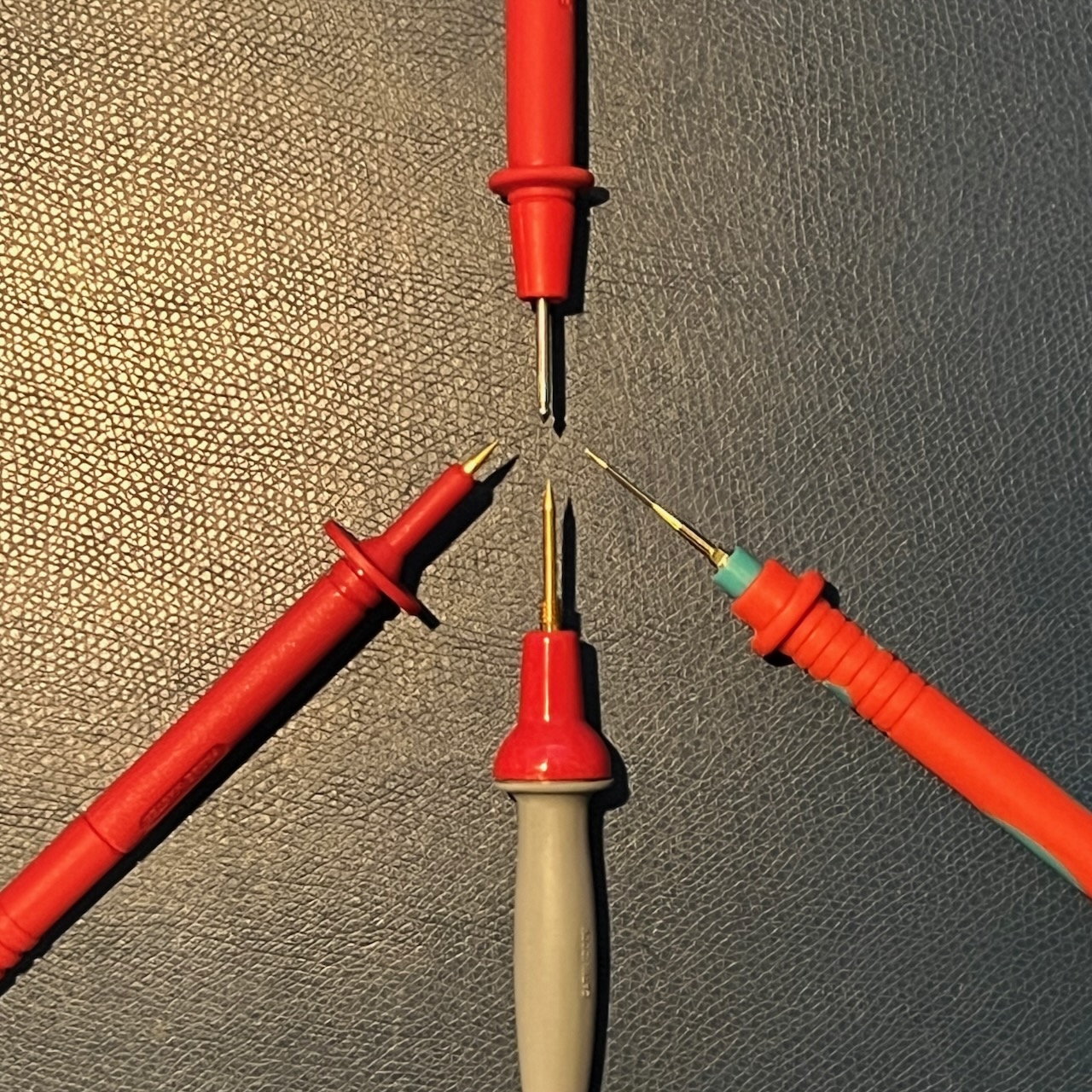
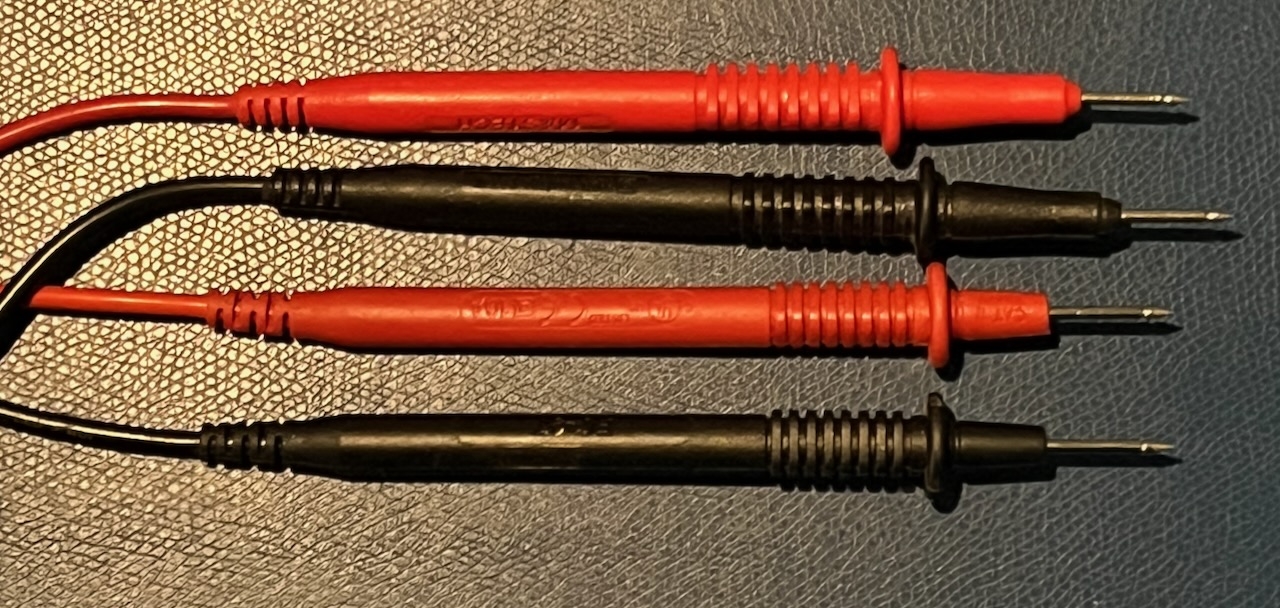
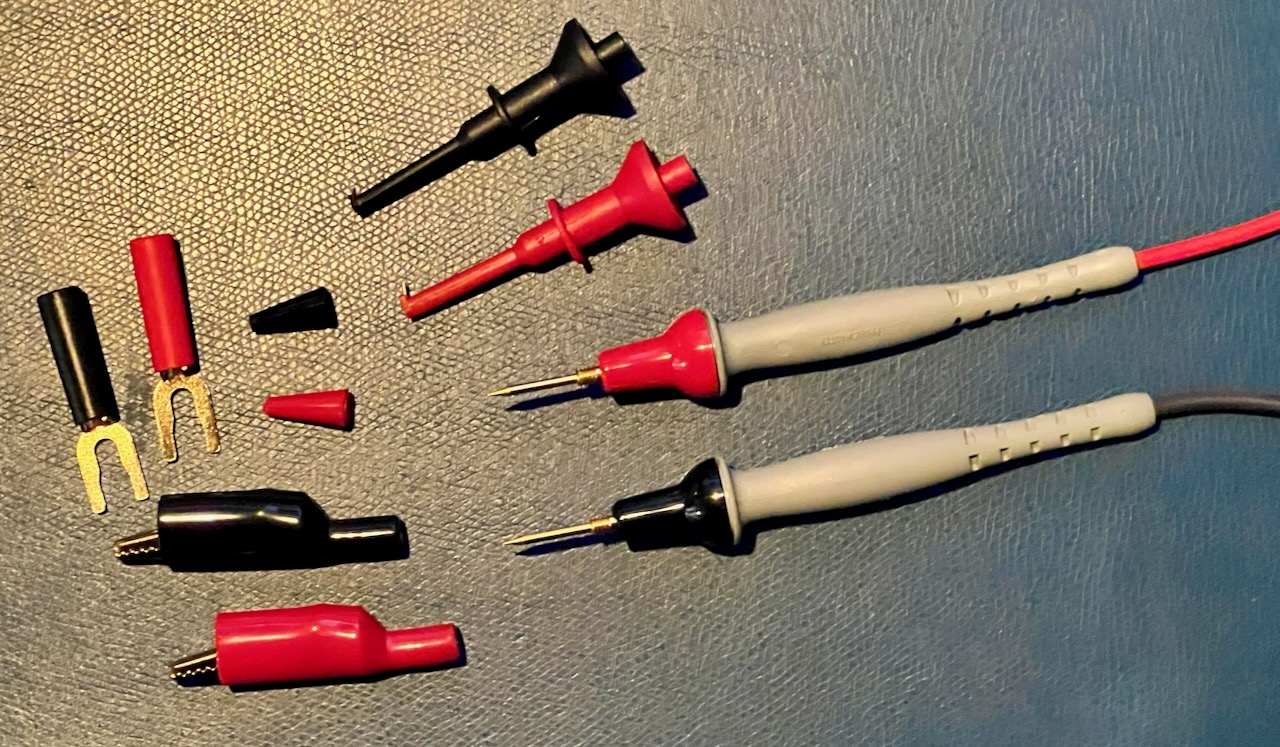


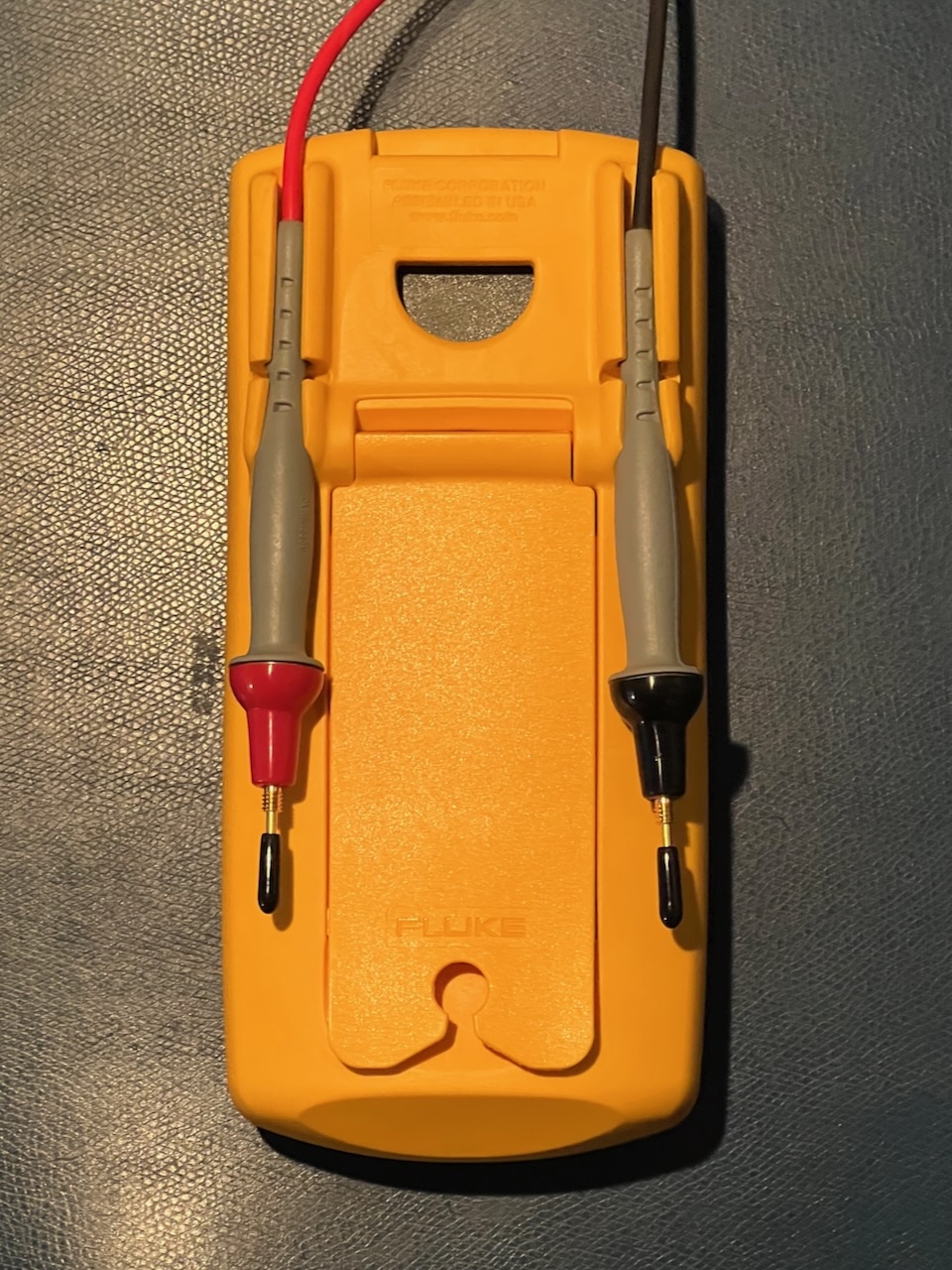
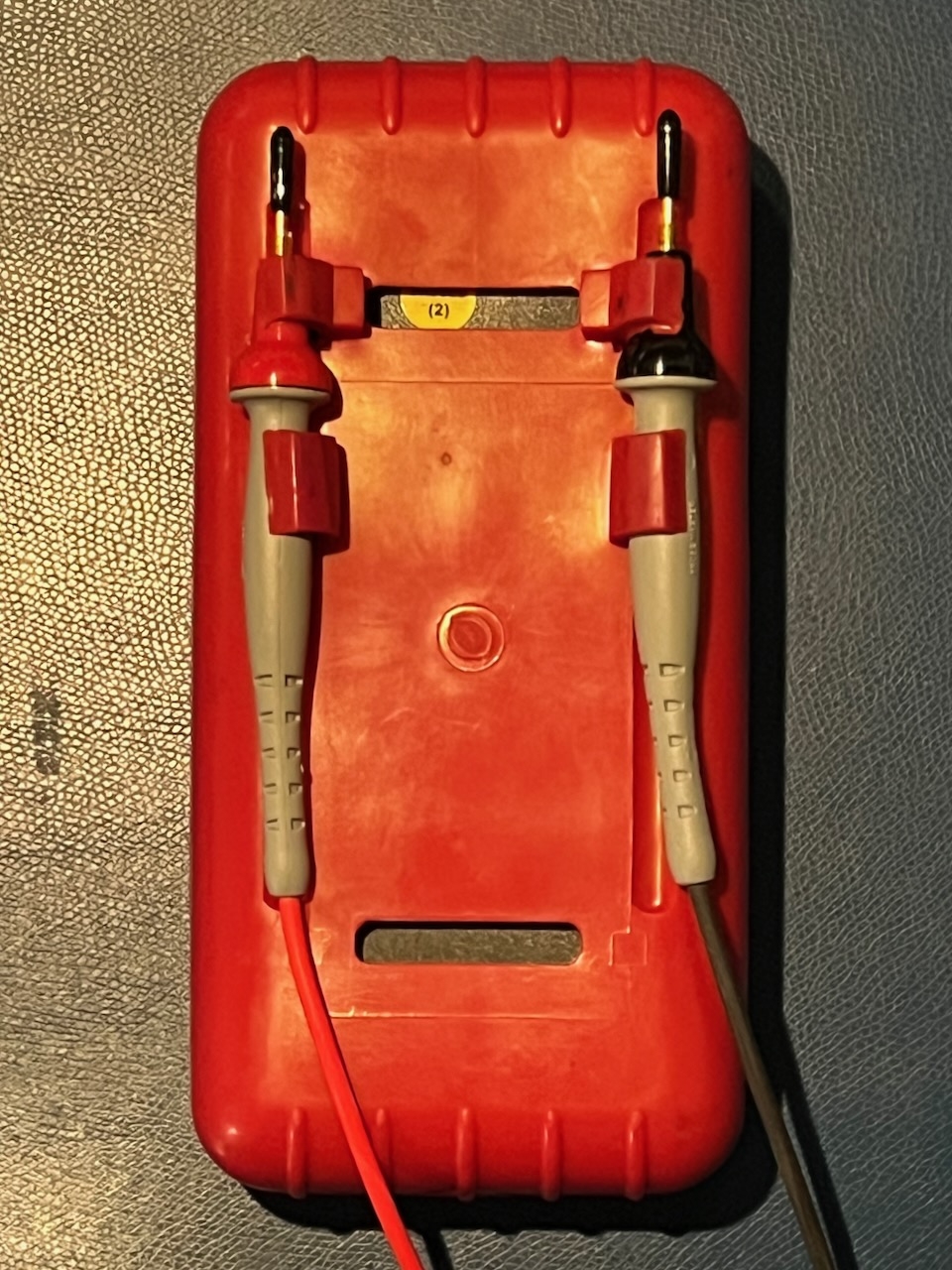
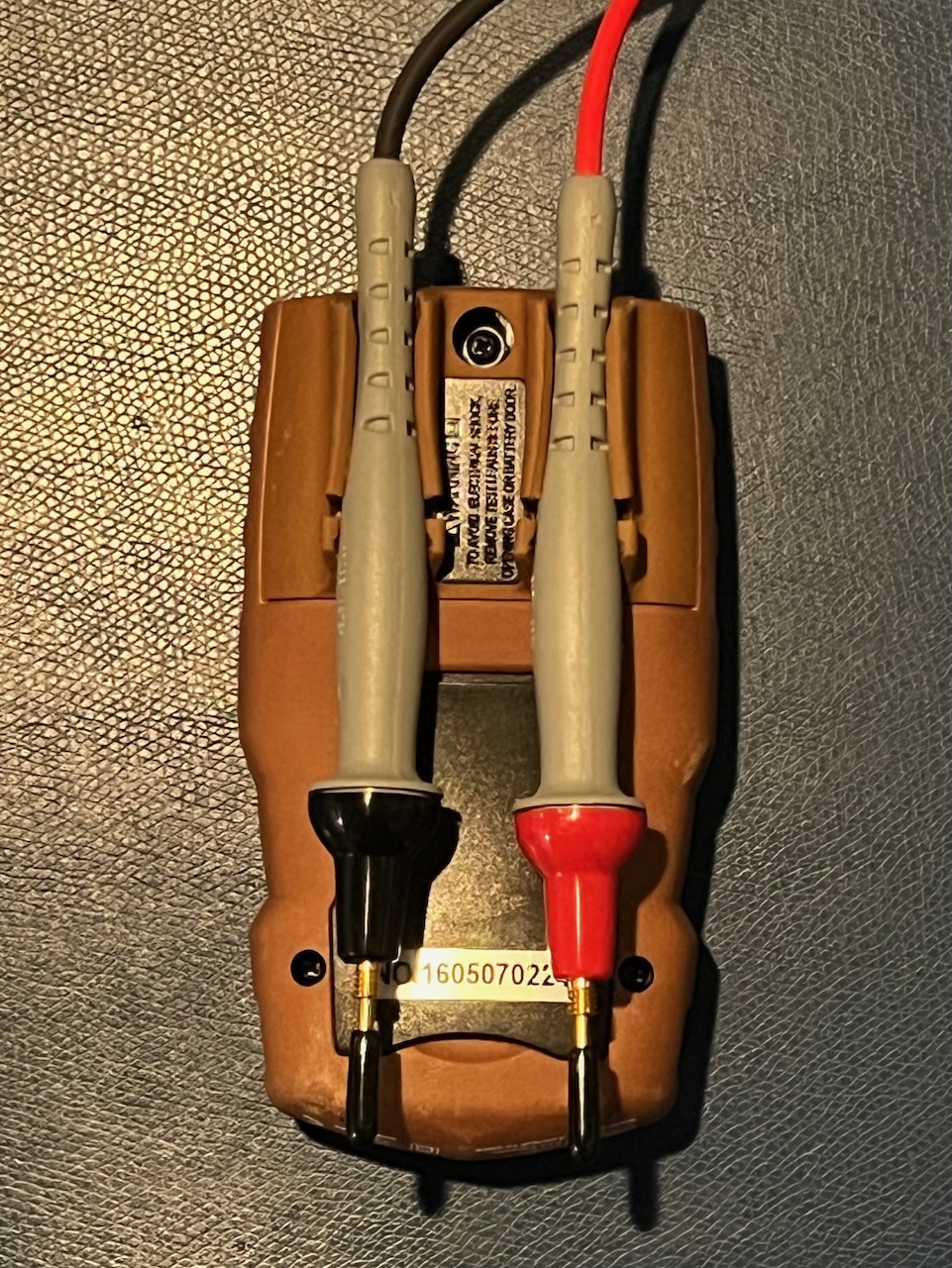
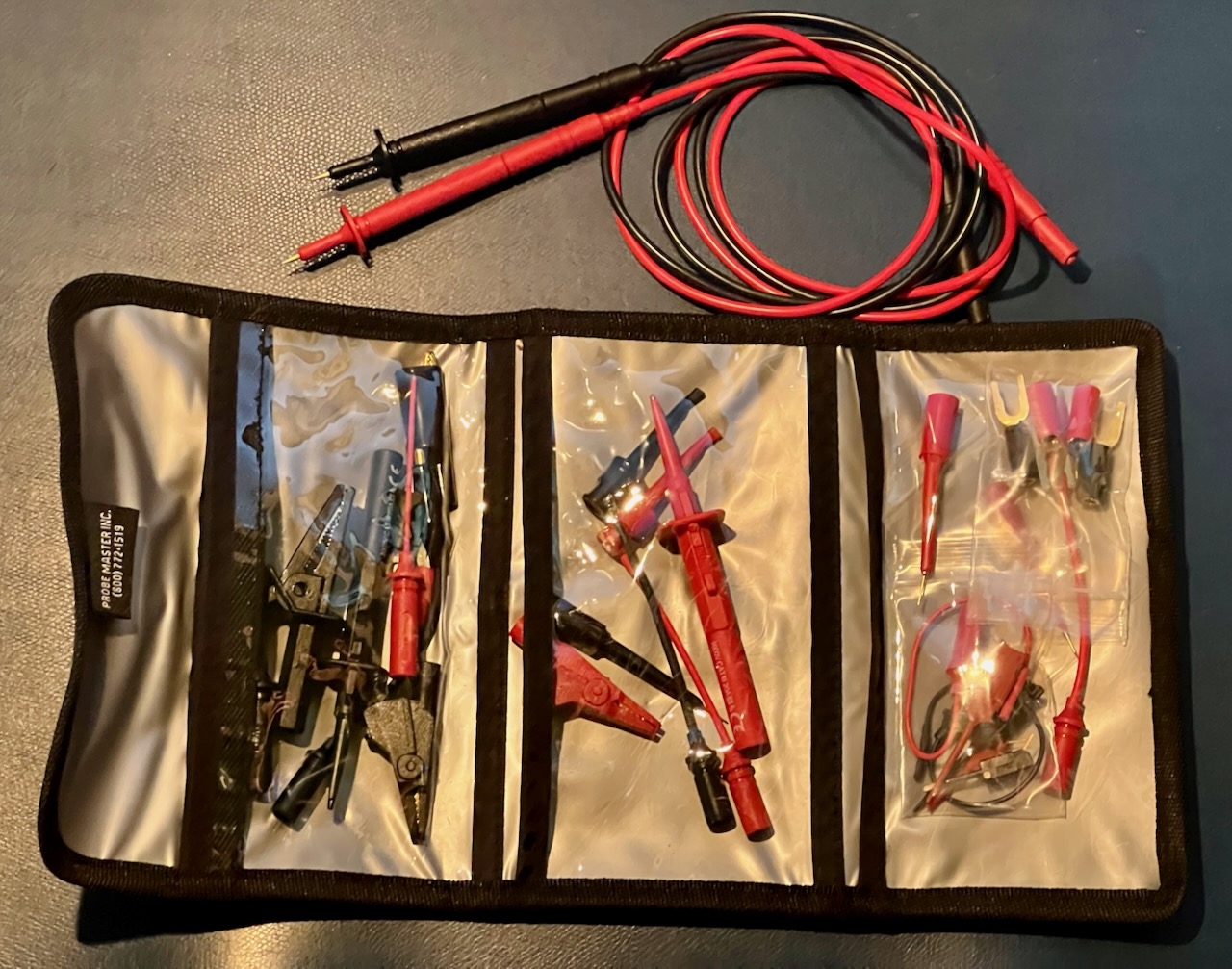


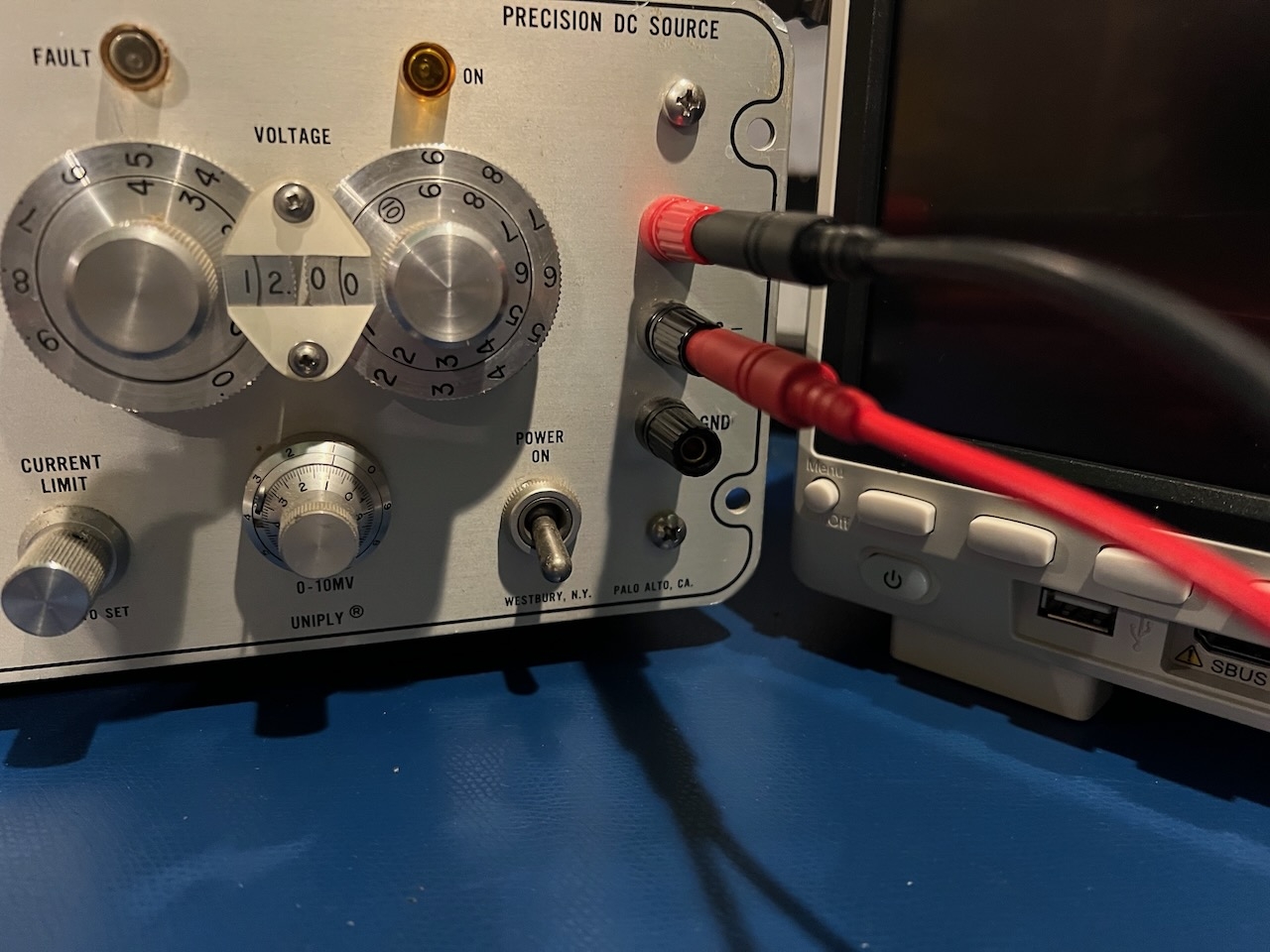


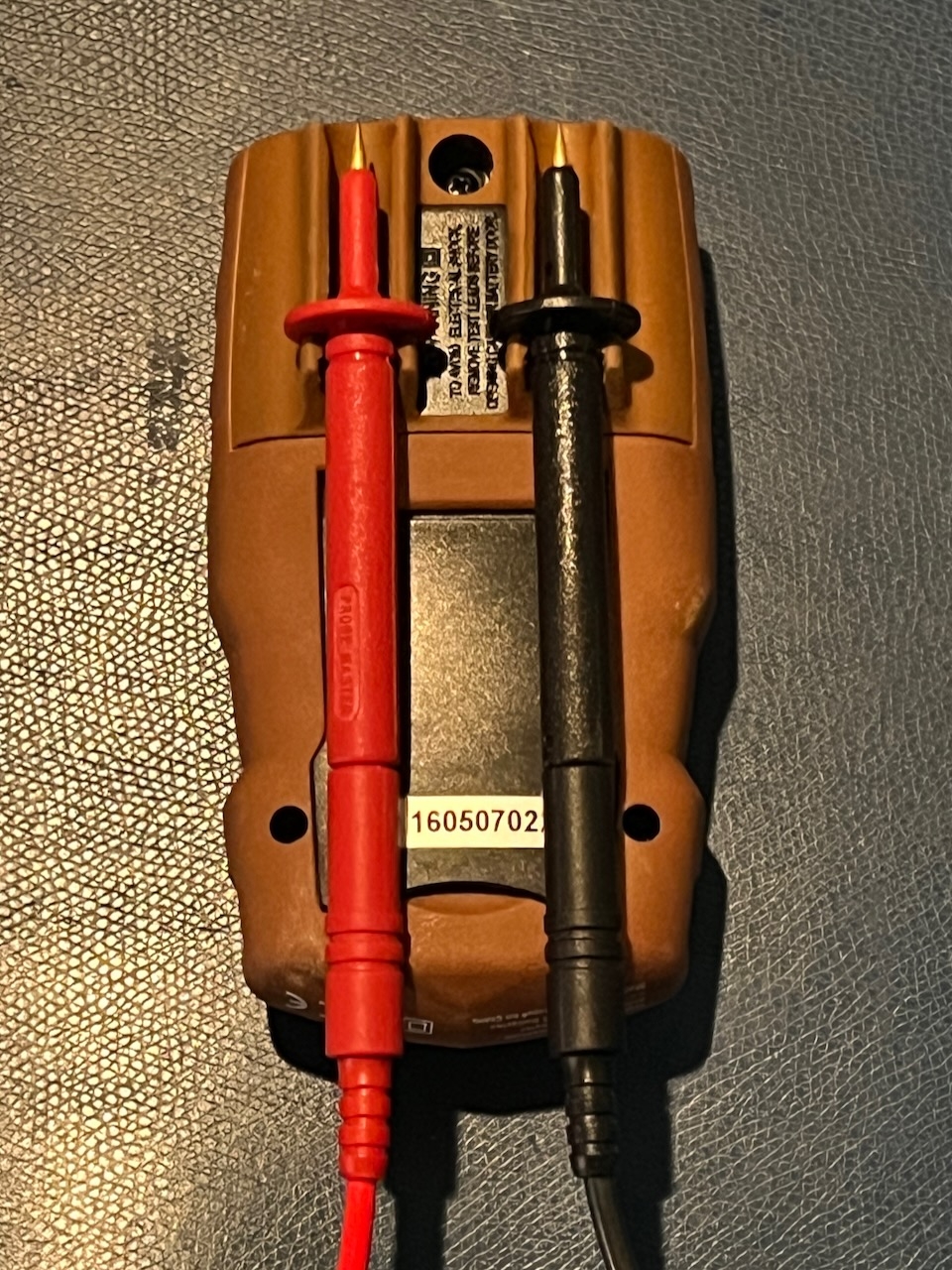
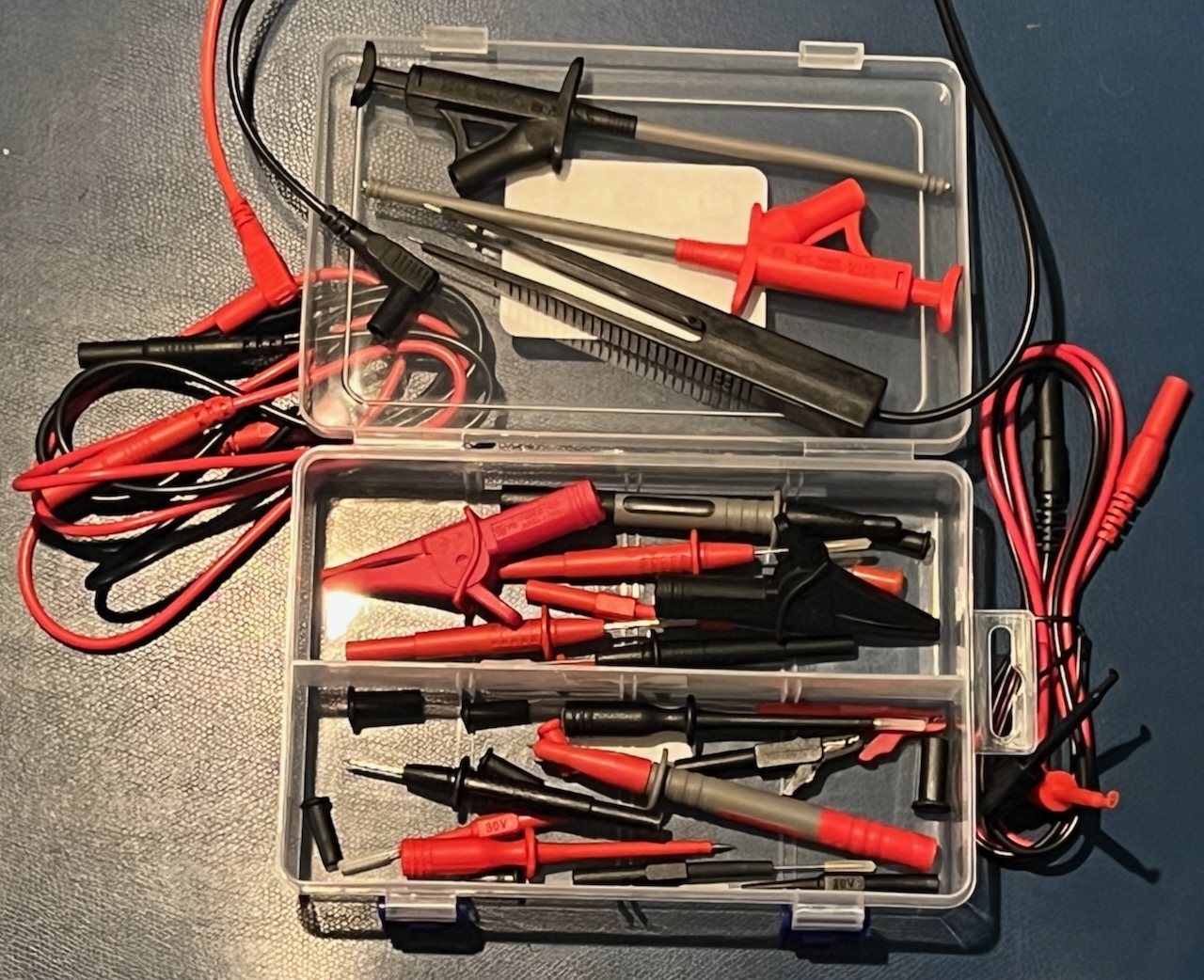
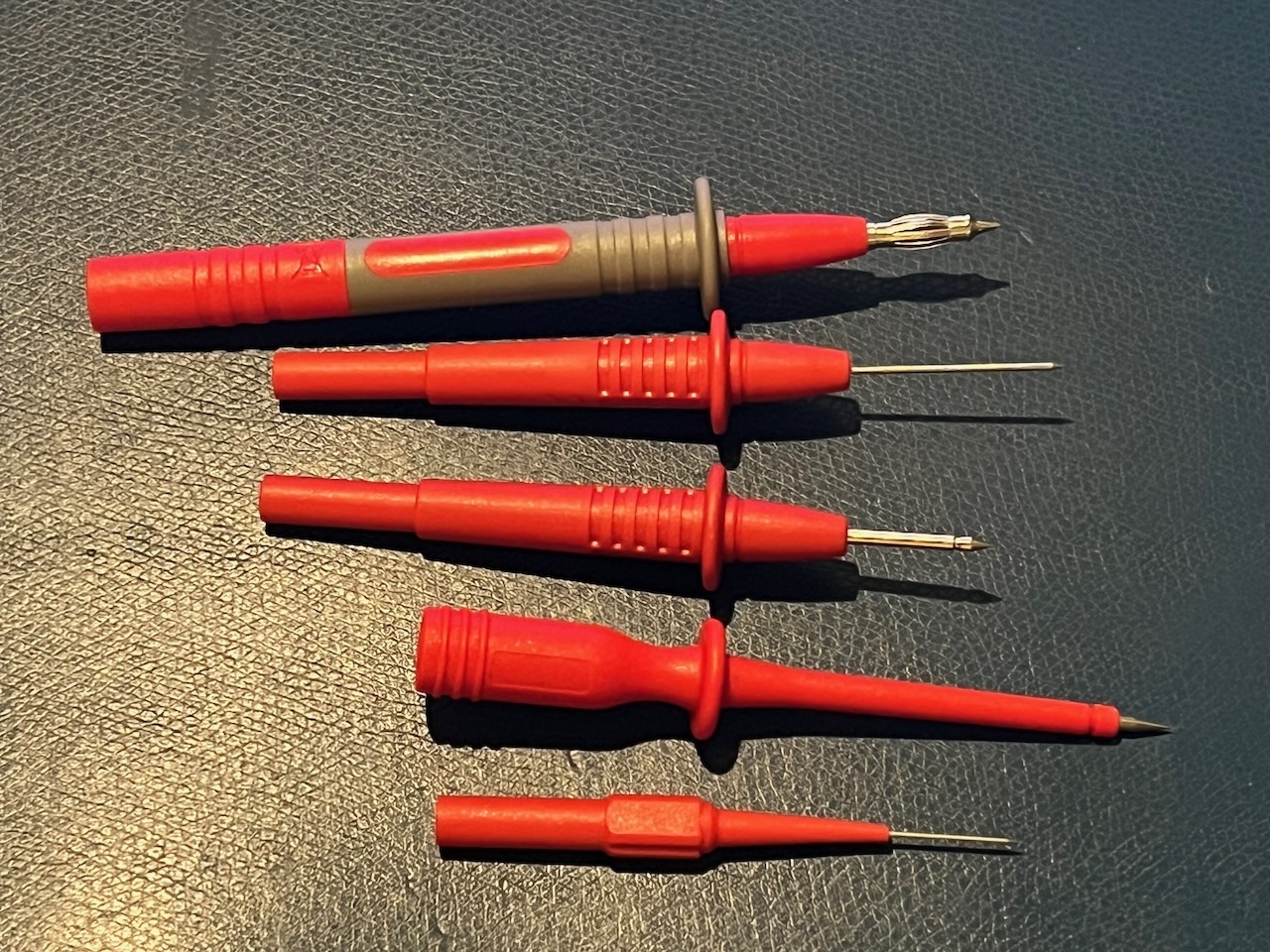
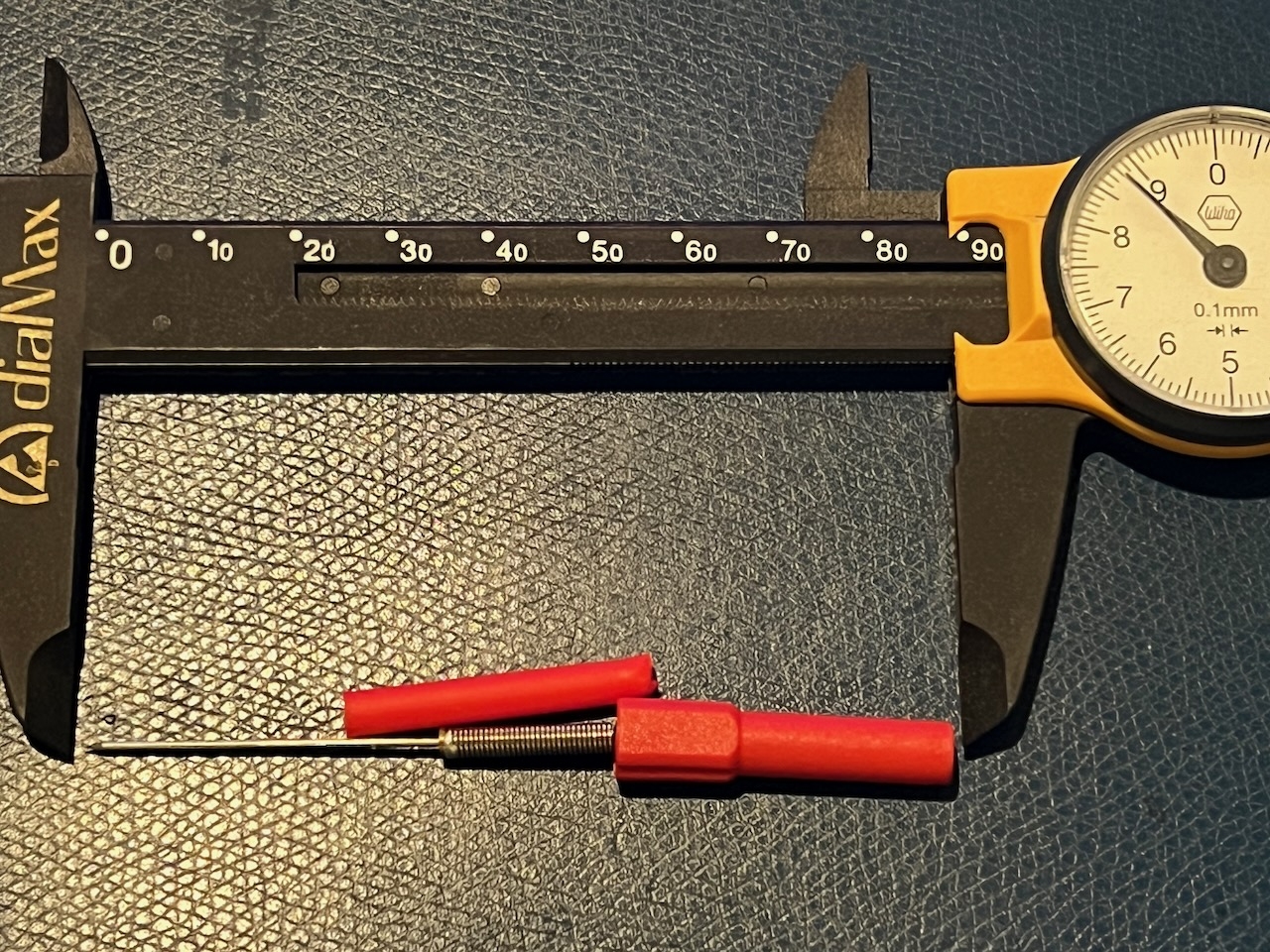
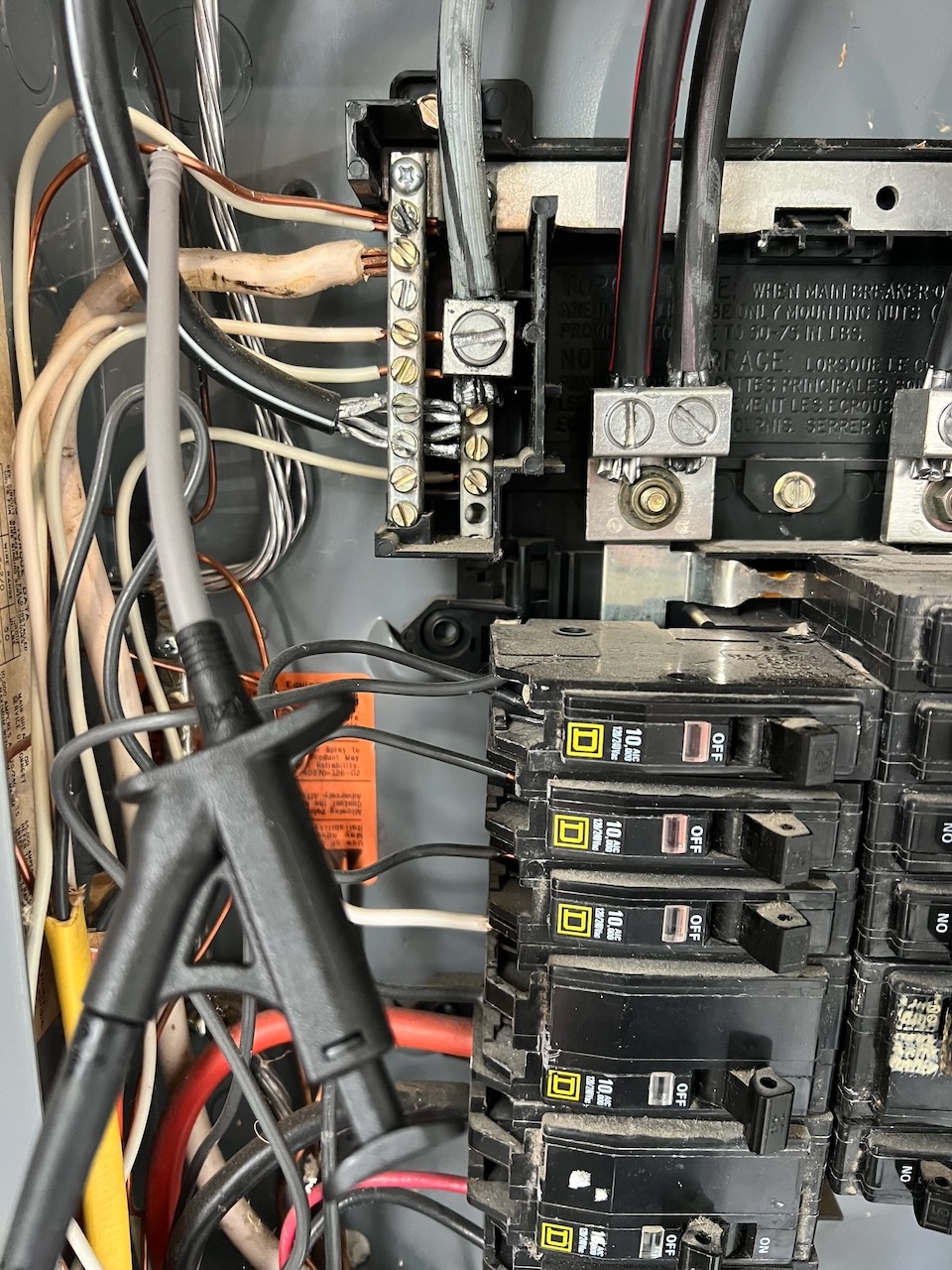



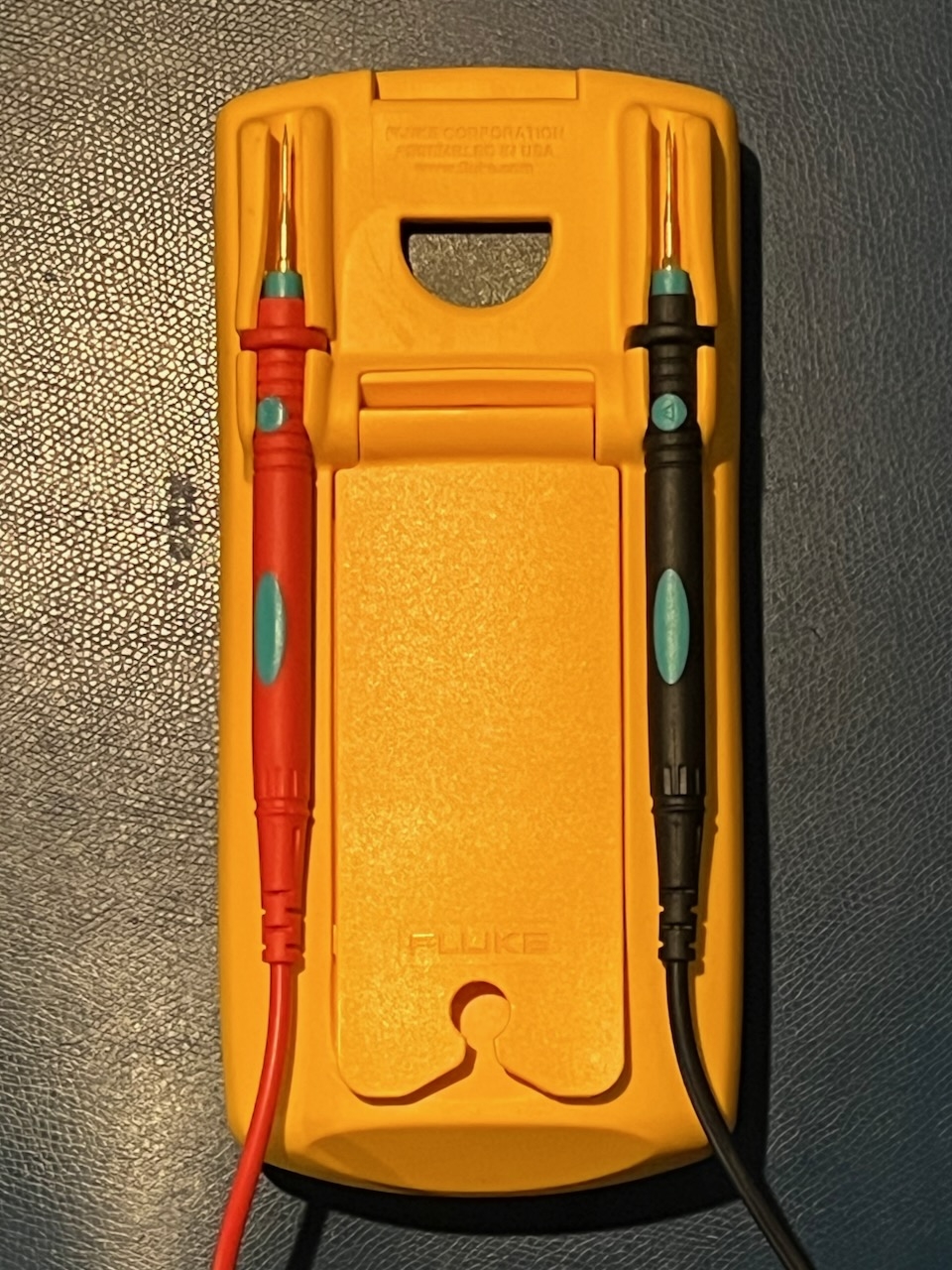

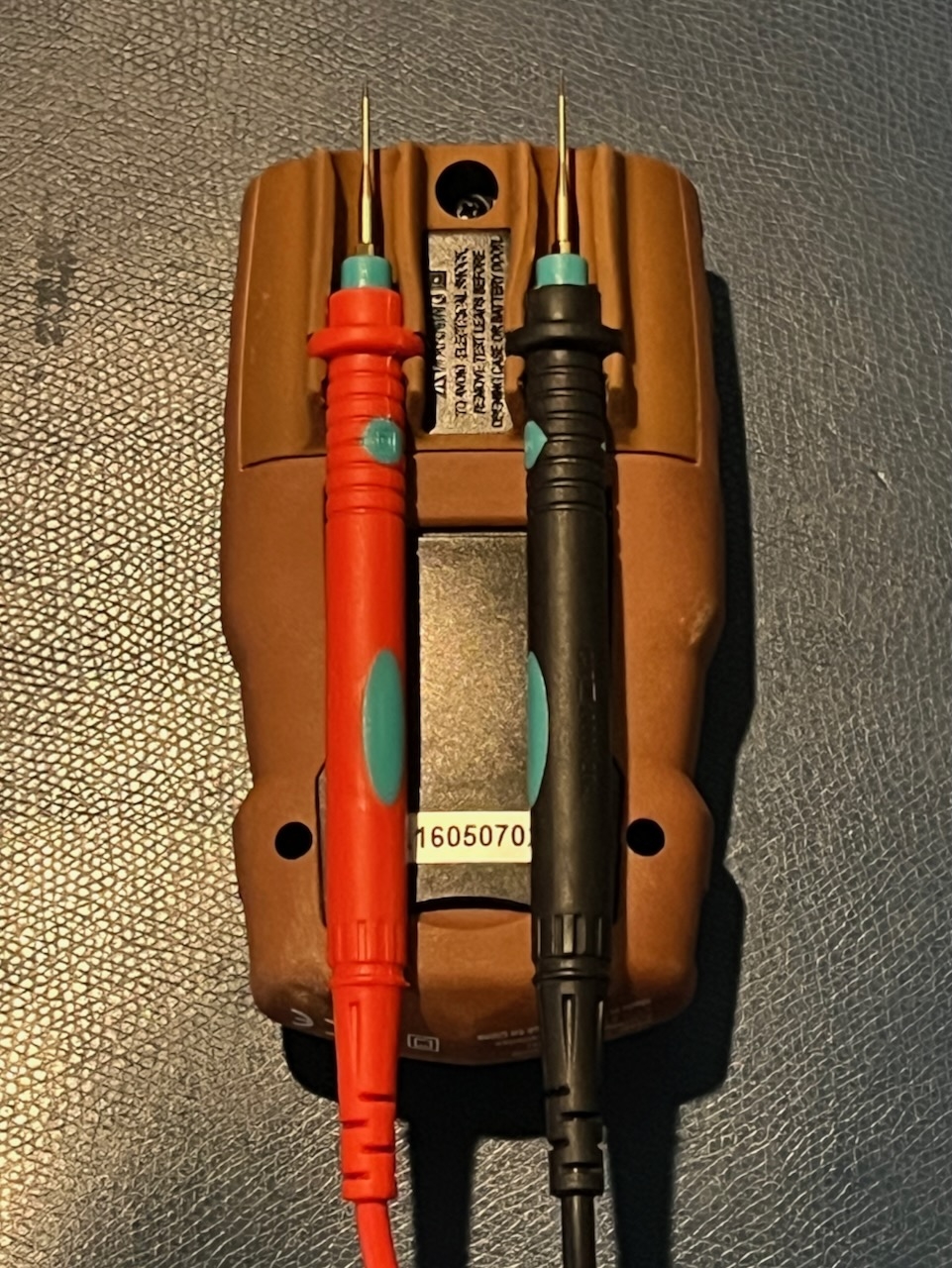
Comments
Gold+nickel
Gold plating on connectors and probes is applied over a heavier nickel plating, so you have the benefit of both: the unreactivity of gold and the hardness of nickel.
robespierre wrote:Gold
My concern with the gold plating is that it's going to wear off. I don't see how that would be affected by the plating underneath it. Or maybe you're addressing a different concern?
Extra wire on 9000 series
Thanks for this post. Could you explain why some of the 9000 series attachments like the piercing hook (https://probemaster.com/9167-piercing-hook-3-wire/) have a wire coming off them?
That wire coming off the back
That wire coming off the back is where the lead attaches. I think the confusion is that Probe Master's photo makes it look like there could be a second connector, directly on the back of the piercing hook. That's just the push button.
9167.jpeg